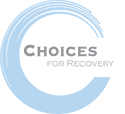Sound healing is a powerful tool in recovering from substance abuse. Similar to music therapy, sound healing has been used for thousands of years as a method for healing the body. Vibrations from sounds can trigger the state of brain wave activity to help guide you to a peaceful state. It has been known to provide all around relief for mental, emotional, and physical issues - such as addiction, anxiety, depression, sleep problems, pain, and many more. Sound healing is an activity that anyone can participate in and find peace within.
When you are dealing with early recovery, most people experience anxiety, pain, discomfort, and fear. Sound therapy, also called vibration medicine, calms the body without any effort at all.
Passive, participatory experiences are created by activating certain parts of the brain. This works in much the same manner as the joy or peace that comes with hearing a favorite song, or on the negative side, the jolt that comes from the sound of your alarm clock.
Our programs are based in Holistic practices because that form of treatment have allowed patients to find alternatives to psychoactive medications that treat a variety of issues. Patterned sound therapies have been proven to help treat sleep disorders, anxiety, depression, and helps to manage stress, PTSD, depression and even pain. By alerting parts of the brain that regulate reactions produced by chemical secretions, sound therapy is better able to stimulate a healing and therapeutic response.
By implementing sound therapy and holistic modalities into your addiction treatment experience, you may further find a change in mind, body, soul. By alleviating pent up stress and aggression attributed to long term drug & alcohol addiction or chemical imbalances, clients are able to focus on where the imbalances come from. Introducing other forms of sound therapy in a group setting helps to strengthen to bonds between therapists and their respective clients. For many who are undergoing detox from drugs or alcohol, sound therapy can help alleviate symptoms of chronic pain. When done in a peaceful environment, patients find they easily see this area as a safe place, thus allowing more in depth therapy to continue.
